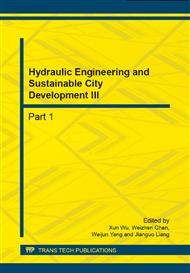[1]
Energy-Saving Office of State Forestry Administration, China Green Carbon Fund Forestation Project on Carbon Sequestration Calculation and Test Guideline, China Forestry Press, Beijing, Dec. (2008).
Google Scholar
[2]
Li Nuyun, Forestry Carbon Sequestration in China, China Forestry Press, Beijing (2007).
Google Scholar
[3]
Grossman G. Krueger A. Economic Growth and the Environment, Quarterly Journal of Economics, 1995, 110( 2): 353—377.
Google Scholar
[4]
List J A, Gallet C A. The Environmental Kuznets Curve: Does One Size Fit All?, Ecological Economics,1999, 31( 3) : 409—423.
DOI: 10.1016/s0921-8009(99)00064-6
Google Scholar
[5]
Andreoni J, Levinson A. The Simple Analysis of the Environmental Kuznets Curve, Journal of Public Economics, 2001, 80( 2): 269—286.
DOI: 10.1016/s0047-2727(00)00110-9
Google Scholar
[6]
UNFCCC. Kyoto Agreement [EB/OL], http: /unfccc. int/resource/docs/convkp/convchi. pdf, (1997).
Google Scholar
[7]
Wu Shuhong, Zhang Xiaoquan, Non-Lasting Risk Analysis of CDM Forestry Carbon Sequestration Project, Agricultural Science, 2007, Vol. 43(8): 123-126.
Google Scholar
[8]
Guangxi Carbon Sequestration Project, [EB/OL]. China Carbon Sequestration Website, (2006).
Google Scholar
[9]
HE Yinhg, Zhang Xiaoquab and Liu Yunshan, The Market Condition and Development Potentials of the Trade of China Forestry Carbon Sequestration, Forestry Science, 2007, Vol. 43(7): 106-111.
Google Scholar
[10]
Li Nuyun, Xu Zehong, and Wang Chunfeng etc., Priority Development Area Selection and Analysis of China Forest Reforestation Project, Forestry Science, 2007, Vol. 43(7): 5-9.
Google Scholar
[11]
Wu Bung, Zhang Biao and Febg Ling, Kyoto Agreement, The New Opportunities Brought by Ecological Forest Supply Area –The Application Channel and Prospect of Carbon Sequestration, Environmental Science and Management, 2006, Vol. 31(6): 154-155.
Google Scholar
[12]
Hou Yuanzhao, China Forest Resources Accounting and Research, China Forestry Press, Beijing, 1995: 106-300.
Google Scholar
[13]
Xi Tingting, and Li Shunlong, Potential Carbon Sequestration Capacity Analysis if Heilongjiang Province, Forestry Economic Issues, 2006, Vol. 26(6): 59-522.
Google Scholar


